
Introduction
As quickly as it came, another AndroidTO conference has wrapped up. Having missed the first three events, I knew it was more than time to head down and check out what is billed as Canada’s premier Android developer conference.
From humble beginnings and a single developer track the first year, AndroidTO has grown quickly. The growing popularity of the event is mirrored by that of Android. Several hundred attendees made their way to downtown Toronto this year to learn the latest about Android. The one-day event featured four streams this year: Developers, Designers, Mobile Business and Gaming.
Here is a look at how AndroidTO went down today.
Keynote
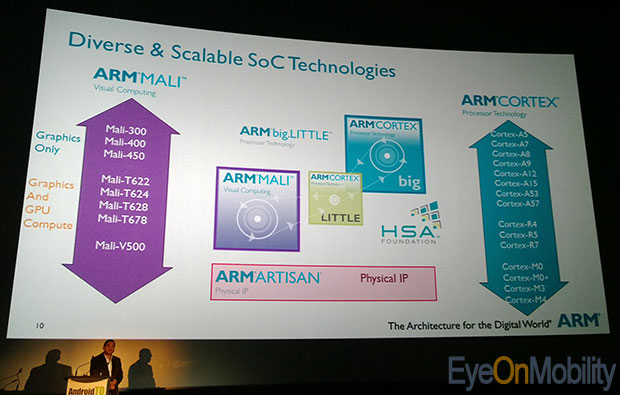
With 1 billion smartphones expected to ship in 2013, those numbers are only going to grow. Let’s not forget also that the mobile space is now larger than simply smartphones. Tablet sales are growing fast as well, even outshipping notebook PCs now. And wearable technology is expected to be another major market in the next few years. More than 370 million smartwatches alone could ship in 2020.
Agarwal also talked about the growing importance of mobile in our daily lives. For example, 60 percent of Facebook and Twitter users now access these apps through a mobile device. 25 percent of all YouTube views are also done with a mobile device. It will only become more important in the coming years. New trends will emerge to shape the mobile space and Android in the coming years. These include:
- facial recognition and unlock
- Intuitive gesture and natural language input
- live image and scene recognition
- multiple simultaneous displays
- video and image editing, manipulation and rendering
- multitasking and multi-window productivity
The sessions
The sessions featured a number of interesting speakers. As is so often the case at such events, choosing where to go proved a difficult choice. I followed my own interests and attended a few tracks from the Mobile Business track, one from the Designer track and one from the Developer track.
Android for Humans: Designing Compelling Apps for Android
Kicking things off in the Designer track, this talk focused on how to ensure that apps stand out in a crowded market. With the Google Play store now at over 1,000,000 apps, it’s important to ensure that developers distinguish their apps from other similar apps.
BNOTIONS’ Zach Forrester pointed out that Android users has specific user expectations and that these are often not the same as those of iOS users. Rather than simply porting an iOS app, Forrester suggested exploiting the unique features of Android, especially now that Google has well documented guidelines and much improved development tools.
Making Commerce Better
As the name implies, this session looked at commerce. Interestingly, Satish Kanwar, a Director at Shopify, deliberately tried to keep his talk from specifically mentioning a number of commonly used terms such as mobile commerce and the omni-channel model. In a nutshell, he talked about the convergence of online and offline motions into a single unified experience where customers do not see the difference between the two but rather a range of options open to them with mobile being but one of them.
He talked about how value chain democratization is quickly changing the commerce landscape. Much as we have seen in other sectors, tools such as Shopify have opened doors previously closed to many. Nearly anyone can now open an online store with minimum experience, time and money.
As for traditional retail, it will live on and will even thrive in the experiential space.
NFC and the world of m-commerce in Canada
In a second session on mobile business, Dave Robinson, Vice President, Emerging Business at Rogers Communications, talked about virtual cards and mobile wallets (a word he does not like!).
Rogers has been leading the charge in this area and was the first operator in the world to have a commercial virtual card distribution system certified end-to-end by both Visa and MasterCard. It is also the first North American MNO to receive a national banking license for the purpose of issuing credit cards to its customers.
Robinson went on to talk about how card virtualization does not have to be limited to payment cards. It could be extended to any number of other sectors. For example, it could apply to health cards. In fact, such efforts are already underway.
Addressing privacy concerns is another area where card virtualization can help. He gave the example of being carded at the liquor store to prove your age. By providing your ID to the clerk, you provide a fair amount of personal information (name, address, etc). A virtual card on your phone would allow you to tap the contactless reader. It would simply return a pass or fail result with a photo to confirm identification. Like that, other personal information would no longer be at risk.
A Look at Android in 2016
For the last session of the day, I decided to head to the Developer track and find out more about what Android could look like in 2016. Presented by Shidan Gouran, the CEO of Home Jinni Inc., it was an interesting look at where we could be when we all come back for AndroidTO 2016.
The network in 2016 will predominantly use 4G data and voice and continue to leverage Wi-Fi, improved with next-generation hotspot technology and prevalent tri-band ac and ad routers, and Bluetooth. In Gouran’s future ball, NFC does not appear to be very relevant.
The SoCs of 2016 will be quite impressive. Here is what we can look forward to:
- 4.3GHz quad-core SoCs with a 64-bit architecture
- Wide I/O 2 memory
- GPU delivering performance up to 2 terraflops
- 81MP 3D cameras
- Support for all mentioned networks
- 4 times the energy efficiency of the Samsung Galaxy S4
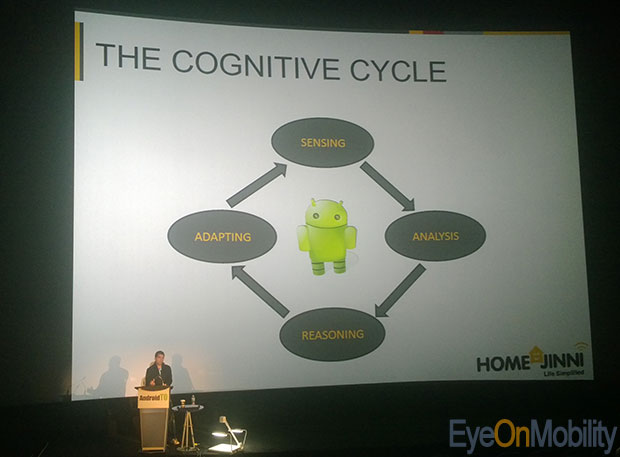 Voice will take on a more imporant role in Android as well. It will become part of the UI with improved natural language capabilities, instant translations and context awareness.Other areas will also dramatically improve:
Voice will take on a more imporant role in Android as well. It will become part of the UI with improved natural language capabilities, instant translations and context awareness.Other areas will also dramatically improve:
- Maps will feature greater support for indoor maps, real-time locating systems, in-location alliances and context aware preemptive information.
- More unified communications with Google providing a single unified user interface for multimedia calls, IM, SMS and email (we’re already seeing signs of that in Android 4.4 KitKat).
- Improved security leveraging voice, fingerprints, facial recognition, iris scanning and always-on sensors.
Cameras will also undergo significant improvements and will offer features such as
- <5ms auto-focus
- object tracking
- adjustments to variable light conditions
- object recognition
- video events recognition
- photos and videos will blur into a single medium
What else can we expect in 2016? Here are a few more predictions:
- Payment solutions will use Bluetooth and Wi-Fi based technologies with NFC to remain a “lame duck” due to lack of device penetration (eg, Apple does not yet support NFC).
- The battle for the living room will be ongoing
- Android will power many more consumer devices but without Google’s services (think of what Amazon and Xiaomi are doing)
- The mobile web will stage a come back thanks to HTML5
- App stores may disappear as we increasingly move to browser based apps
Closing keynote – Building Software in the Mobile Age
The closing keynote by Tumblr’s Chris Haseman was a useful and entertaining look at software development in the mobile age. He talked about relationships between managers, developers and designers, project timelines and deliverables and gave some tips that Tumblr used to get their Android app a rating above 4 stars.
What else?
Aside from the sessions, AndroidTO 2013 also featured a number of exhibitors and sponsor booths.
- Android mini-figures for sale
- Checking out the Sony SmartWatch 2
- More exhibitors
On the lighter side of things, there was a contest in which participants had to complete as many challenges as possible to win entries into a draw to win prizes including a number of devices. Challenges included having your picture taken with a presenter, finding and consoling a BlackBerry user, collecting 10 business cards from different companies and more.

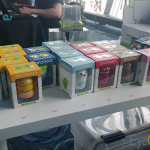
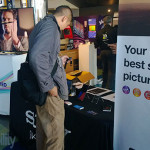
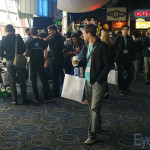
Thank you for posting that link, Jerome.
And if I attend AndroidTO 2014, then yes, perhaps we can meet then.
Thanks, Jake! Hopefully our paths will cross at AndroidTO 2014!
For anyone interested in Jake’s take on AndroidTO, you’ll find it at http://www.subarctic-systems.com/one-android-developers-look-back-at-androidto-2013/
I also attended the AndroidTO conference. However, I missed most of the opening keynote and I only attended the development sessions. I would like to thank you for your summaries of what was said during the keynotes and sessions that you attended. I also blogged about what was said during the sessions that I attended. However, your description of what Shidan Gouran said during his talk was quite detailed. And I agree that what Shidan Gouran had to say was quite interesting. I also agree that it was a fun and informative day, and I too am looking forward to AndroidTO 2014.